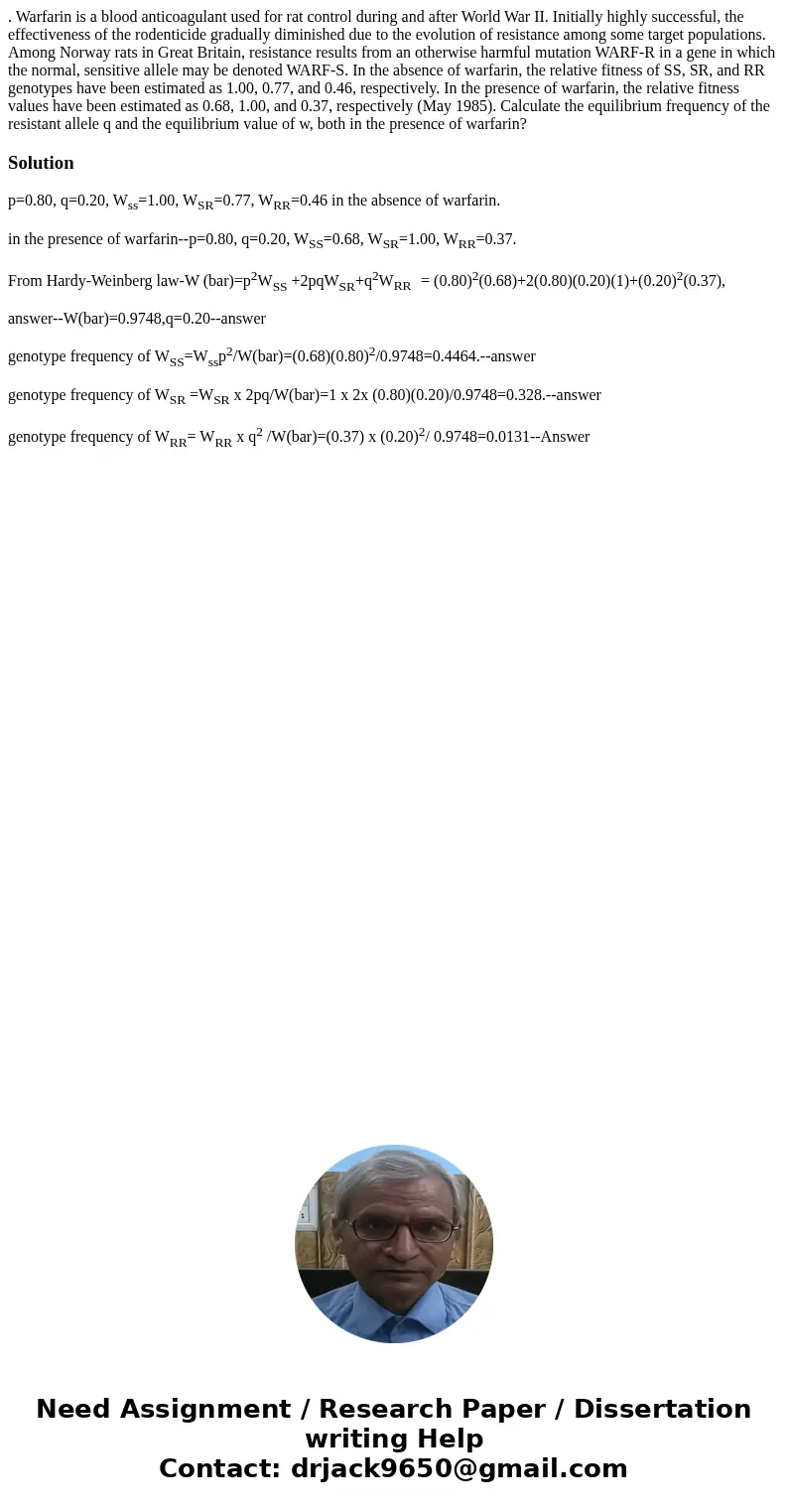Warfarin is a blood anticoagulant used for rat control duri
. Warfarin is a blood anticoagulant used for rat control during and after World War II. Initially highly successful, the effectiveness of the rodenticide gradually diminished due to the evolution of resistance among some target populations. Among Norway rats in Great Britain, resistance results from an otherwise harmful mutation WARF-R in a gene in which the normal, sensitive allele may be denoted WARF-S. In the absence of warfarin, the relative fitness of SS, SR, and RR genotypes have been estimated as 1.00, 0.77, and 0.46, respectively. In the presence of warfarin, the relative fitness values have been estimated as 0.68, 1.00, and 0.37, respectively (May 1985). Calculate the equilibrium frequency of the resistant allele q and the equilibrium value of w, both in the presence of warfarin?
Solution
p=0.80, q=0.20, Wss=1.00, WSR=0.77, WRR=0.46 in the absence of warfarin.
in the presence of warfarin--p=0.80, q=0.20, WSS=0.68, WSR=1.00, WRR=0.37.
From Hardy-Weinberg law-W (bar)=p2WSS +2pqWSR+q2WRR = (0.80)2(0.68)+2(0.80)(0.20)(1)+(0.20)2(0.37),
answer--W(bar)=0.9748,q=0.20--answer
genotype frequency of WSS=Wssp2/W(bar)=(0.68)(0.80)2/0.9748=0.4464.--answer
genotype frequency of WSR =WSR x 2pq/W(bar)=1 x 2x (0.80)(0.20)/0.9748=0.328.--answer
genotype frequency of WRR= WRR x q2 /W(bar)=(0.37) x (0.20)2/ 0.9748=0.0131--Answer

 Homework Sourse
Homework Sourse